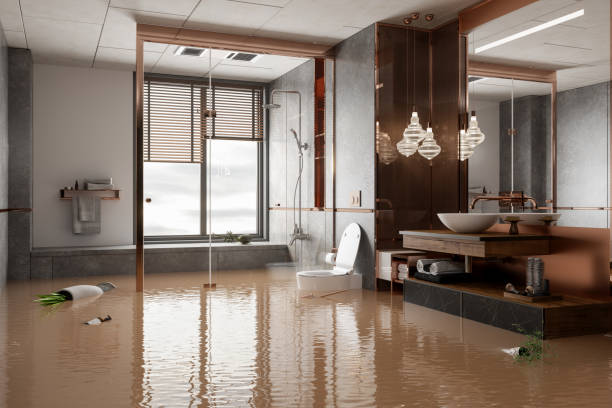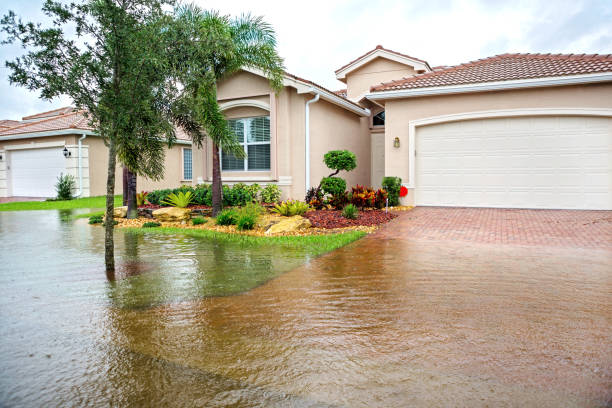Louisiana River & Bayou Flooding Risks

The Mississippi River's Impact on Louisiana Properties
The mighty Mississippi shapes Louisiana's flooding landscape, particularly affecting communities from Baton Rouge to New Orleans. Historical flood events have demonstrated the river's capacity to overwhelm even modern flood control systems. The Mississippi's influence extends beyond direct flooding, creating groundwater pressure that affects foundations miles from the riverbank.
During high-water events, properties near the Mississippi face unique challenges. Hydrostatic pressure can force water through foundation walls even in areas protected by levees. Our restoration teams frequently encounter basement seepage, foundation displacement, and soil subsidence issues in these regions. The river's sediment-rich water also creates additional challenges during cleanup, requiring specialized filtration and sanitization procedures.
Red River Valley Flooding Patterns
Northern Louisiana's Red River presents distinct flooding characteristics affecting Shreveport, Bossier City, and Alexandria. The river's clay-based banks and wide floodplain create prolonged flooding events that can saturate structures for extended periods. Historic flooding in 2015 demonstrated the river's capacity to affect properties well beyond its normal boundaries.
The Red River's unique clay composition poses specific challenges for water damage restoration. The sediment can clog drainage systems and create persistent moisture issues in affected structures. Our restoration process includes specialized clay removal techniques and enhanced structural drying protocols developed specifically for Red River flood damage.
The Atchafalaya Basin: America's Largest Swamp
The Atchafalaya River and its vast basin system influence flooding patterns throughout central Louisiana. Communities like Morgan City and Breaux Bridge require specialized approaches to flood damage restoration due to the basin's unique hydrology. The interconnected waterways can create complex flooding scenarios affecting properties from multiple directions.
Our experience with Atchafalaya flooding has led to the development of specific protocols for dealing with the basin's organic-rich floodwaters. Properties in this region often require extensive disinfection and specialized drying techniques to address the unique characteristics of swamp water damage.
Ouachita River System Dynamics
Monroe and West Monroe's flooding challenges stem from the Ouachita River's complex system of tributaries. The river's northward orientation can create backup flooding during heavy rain events, particularly when southern Louisiana experiences high water levels. Historical flooding has demonstrated the need for rapid response capabilities in this region.
Restoration in the Ouachita River basin requires understanding of both river flooding and flash flood dynamics. Our teams employ specialized equipment designed for rapid water removal and structural drying in the region's humid conditions.
Calcasieu River and Lake Charles Flooding
The Calcasieu River's tidal influence creates unique flooding patterns in the Lake Charles region. Storm surge can combine with river flooding to create complex water damage scenarios. Industrial development along the river has altered natural drainage patterns, requiring advanced restoration approaches.
Our Lake Charles restoration teams maintain specialized equipment for handling both fresh and brackish water damage. The combination of industrial contamination risks and natural flooding requires comprehensive testing and appropriate remediation protocols.
Pearl River Basin Challenges
Eastern Louisiana's Pearl River system affects communities from Bogalusa to Slidell. The river's proximity to the Gulf Coast creates compound flooding risks when tropical systems impact the area. Historical flooding has shown the need for specialized restoration approaches in this region.
Restoration work along the Pearl River requires expertise in both freshwater and saltwater damage mitigation. Our teams employ advanced moisture detection systems to identify and address hidden water damage in affected structures.
Technical Flood Damage FAQs
How does river flooding differ from other water damage sources?
River flooding presents unique challenges due to contamination levels and duration of exposure. Unlike clean water sources, river flood water is Category 3 (black water) containing sediments, chemicals, and biological contaminants. Our restoration process includes:
- Advanced containment systems for contamination control
- Specialized antimicrobial treatments
- Comprehensive structural cleaning protocols
- Enhanced drying procedures for saturated materials
- Documentation for insurance and compliance requirements
What role does soil composition play in river flooding damage?
Louisiana's varied soil types significantly impact flooding and restoration approaches. Clay-rich soils near the Red River retain moisture longer and can create ongoing foundation pressures. Sandy soils along the Mississippi River can experience subsidence after flooding. Our restoration process accounts for:
- Soil composition analysis
- Foundation pressure monitoring
- Subsidence risk assessment
- Drainage system modifications
- Long-term stability solutions
How do you address mold risks in river flood damage?
The warm, humid Louisiana climate combined with flood conditions creates severe mold risks. Our approach includes:
- Immediate moisture mapping
- Strategic material removal
- Advanced drying protocols
- HEPA air filtration
- Continuous environmental monitoring
- Preventive treatments
- Post-restoration testing
Emergency Response Protocols
Our flood response units maintain specialized equipment for river flooding events:
- High-capacity extraction systems
- Advanced containment materials
- Industrial hygiene monitoring
- Structural drying equipment
- Environmental testing capabilities
[Internal linking opportunities throughout the service areas mentioned above]
Recent Flooding Events and Response Examples
2016 Louisiana Floods
The August 2016 flooding event demonstrated the complexity of river-based flooding:
- Multiple river systems involved
- Record-breaking rainfall
- Widespread structural damage
- Complex restoration challenges
- Long-term recovery needs
Our response included:
- Rapid deployment of resources
- Coordinated multi-site restoration
- Advanced contamination control
- Comprehensive documentation
- Long-term monitoring
Service Areas in Louisiana
Bossier City
This Red River community requires specialized attention:
- River flooding mitigation
- Clay soil expansion issues
- Military housing protection
- Casino district emergency response
- Flash flood-prone areas
- Basement flooding prevention
Kenner
Proximity to Lake Pontchartrain creates unique challenges:
- Tidal surge protection
- Airport area drainage issues
- Levee system considerations
- Historic property preservation
- Below-sea-level areas
- Storm water management
Monroe
The Ouachita River region faces specific risks:
- River basin flooding
- Bayou overflow management
- Historic district protection
- University area concerns
- Flash flood response
- Drainage system backup
Alexandria
Central Louisiana location presents diverse challenges:
- Red River flooding
- Urban drainage issues
- Historic Garden District preservation
- Commercial district protection
- Flash flood response
- Bayou system overflow
Houma
Coastal position requires specialized attention:
- Tidal surge management
- Bayou flooding response
- Historic structure preservation
- Industrial area protection
- Canal system overflow
- Wetland proximity issues
Zachary
Growing suburban area faces emerging challenges:
- New development protection
- Creek system overflow
- Flash flood response
- Soil erosion concerns
- Drainage system management
- Rapid growth area considerations
Other Water Damage Service Areas in Louisiana
- Belle Chasse Water Damage Services
- Baker Water Damage Restoration
- Covington Water Damage
- Minden Water Restoration
- Crowley Flood Repair
- Gretna Water Damage Restoration
- New Iberia Water Damage
- New Orleans Water Damage Restoration
- Pineville Water Damage Cleanup
- Ruston Flood Repair
- Baton Rouge Water Damage Restoration
- Hammond Water Damage Restoration
- Metairie Water Damage Restoration

